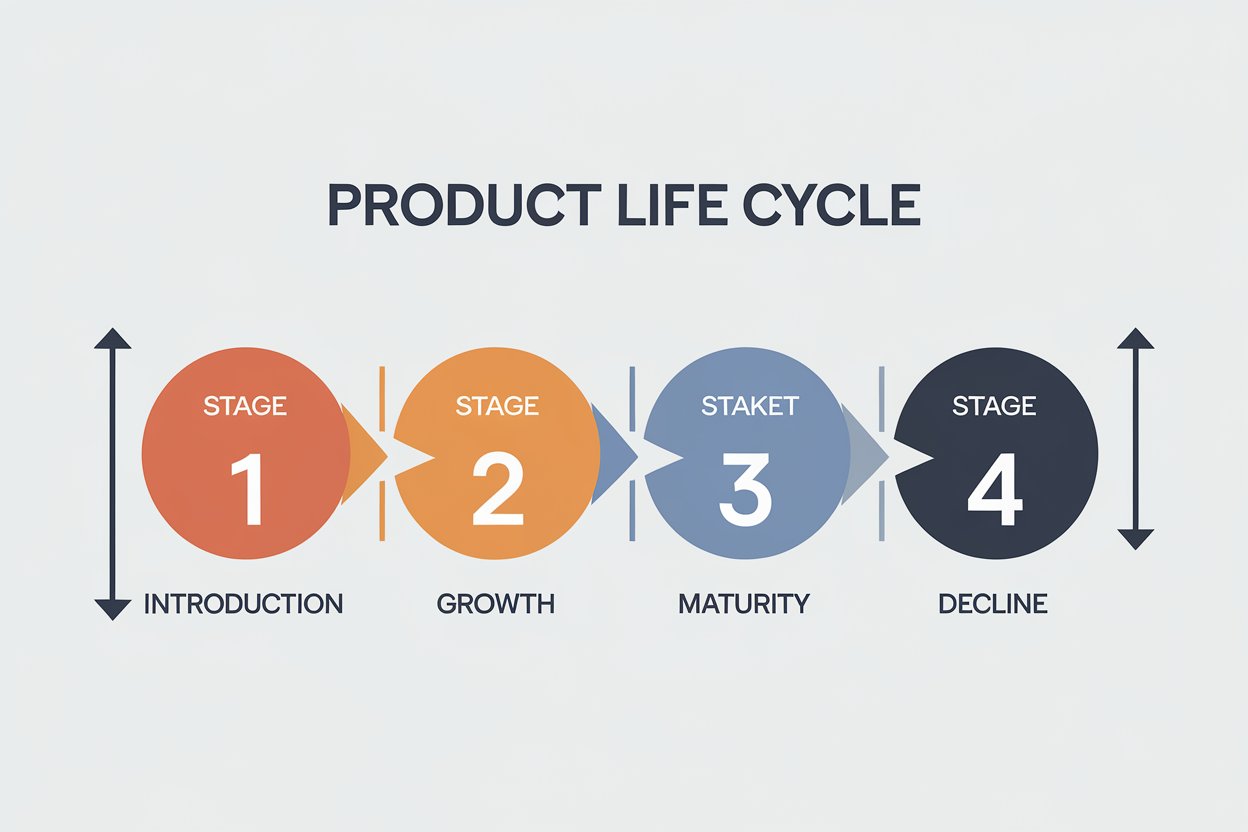Q. No. 3. Describe how marketing strategies change during product life cycle. Also identify and discuss some potential problems with the product life cycle.

marketing strategies
Promoting Systems Across the Item Life Cycle:
The Item Life Cycle (PLC) is the movement of an item through various stages from first experience with possible downfall. Each stage requests unmistakable advertising methodologies to line up with changing buyer needs and serious elements. The four primary phases of the PLC are Presentation, Development, Development, and Decline, each with special advertising draws near.
- Presentation Stage:
In the Presentation stage, the item is new to the market, and mindfulness is low. Promoting systems center around:
- Objective: Make item mindfulness and animate interest.
- Evaluating Methodology: Organizations might pick a market skimming technique (high valuing) to recuperate Research and development expenses or entrance estimating (low valuing) to fabricate portion of the overall industry rapidly.
- Advancement: Weighty interest in publicizing and limited time exercises to teach buyers about the item.
- Dispersion: Restricted dissemination channels, with an emphasis on specific or escalated conveyance to guarantee item accessibility.
- Challenges: Significant expenses of advancement and dissemination, and the item’s unsure market acknowledgment.
2. Development Stage:
In the Development stage, the item acquires market acknowledgment, and deals increment quickly. Showcasing techniques center around:
- Objective: Augment portion of the overall industry and separate from contenders.
- Evaluating Procedure: Costs might stay serious, or organizations might lessen them somewhat to draw in a more extensive client base.
- Advancement: Shift center from attention to featuring the item’s advantages and separation from contenders.
- Dissemination: Extension of appropriation channels to fulfill expanding need.
- Challenges: Overseeing quick development and warding off contenders entering the market.
3. Development Stage:
During Development, the item arrives at its pinnacle, and development eases back as the market becomes immersed. Promoting systems center around:
- Objective: Amplify benefit while safeguarding piece of the pie.
- Valuing Methodology: Costs are cutthroat, and organizations might offer limits to invigorate deals.
- Advancement: Weighty spotlight on helping buyers to remember the item’s advantages, with limited time offers to keep up with brand unwaveringness.
- Dispersion: Dissemination is escalated, with wide accessibility, zeroing in on boosting proficiency.
- Challenges: Rivalry strengthens, prompting strain on edges, and market separation becomes troublesome.
4. Decline Stage:
In the Decay stage, deals drop because of market immersion, changing purchaser inclinations, or mechanical advances. Promoting procedures shift to:
- Objective: Diminish costs and deal with the decay beneficially or leave the market.
- Valuing Technique: Costs might be decreased to clear stock.
- Advancement: Negligible limited time exercises, zeroing in on reminding steadfast clients or offering bargains.
- Conveyance: Decrease circulation channels to reduce expenses.
- Challenges: Choosing whether to keep supporting the item, redo it, or stage it out totally.
Likely Issues with the Item Life Cycle (PLC):
Regardless of its handiness, the PLC idea has a few intrinsic issues and limits:
- Eccentricism of Stage Length:
The length of each stage fluctuates broadly among items, and foreseeing when an item will move starting with one phase then onto the next is troublesome. A few items might stay in the development or development stage for a drawn out period (e.g., Coca-Cola), while others may rapidly decline.
- Overemphasis on PLC Stages:
Organizations might depend too vigorously on the PLC model, prompting untimely choices about item withdrawal or overinvestment in an experienced item. An inflexible spotlight on the cycle might block development and responsiveness to showcase changes.
- Disregards Outer Elements:
The PLC doesn’t represent outside impacts like monetary changes, guidelines, or problematic advancements that might speed up or postpone development through the cycle. Market elements, contest, and purchaser conduct can suddenly adjust an item’s course.
- Absence of Comprehensiveness:
Not all items follow a smooth, successive PLC. Some might skip stages, enter a decay rashly, or experience a resurgence because of changes in innovation or economic situations (e.g., vinyl records reappearing in the computerized age).
- Subjectivity in Stage ID:
It tends to be trying to distinguish the ongoing phase of an item’s life cycle, particularly during changes starting with one stage then onto the next. An item could appear to be in development however is as yet encountering development in unambiguous market fragments.
- Restricted Relevance to All Items:
The PLC turns out better for unmistakable purchaser merchandise however may not precisely mirror the existence pattern of administrations, computerized items, or specialty markets. Computerized items, for instance, may develop quickly with successive updates, obscuring the limits between stages.